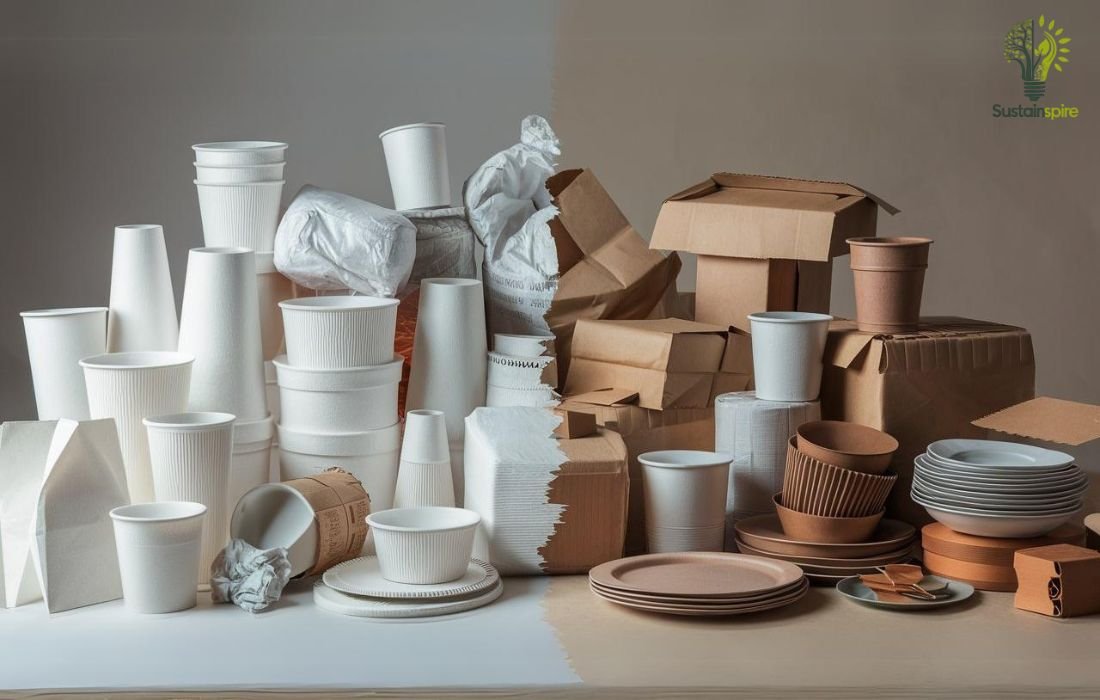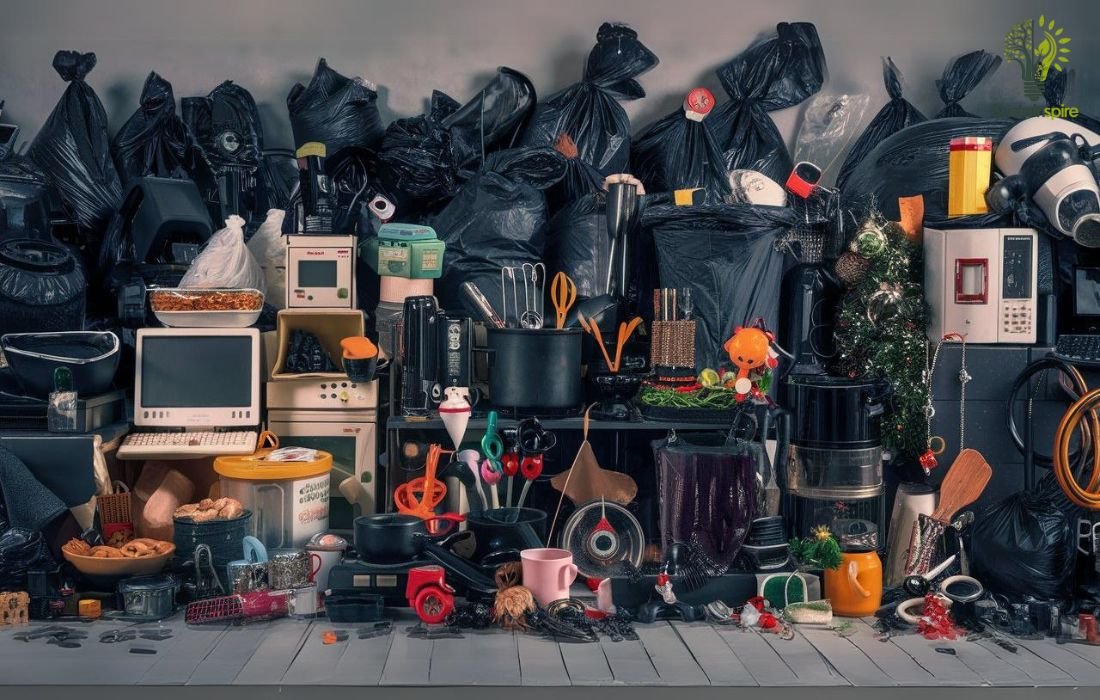Have you ever unwrapped a new TV, pulled out those big, bulky pieces of white packing material, and wondered what to do with them? You know, that stuff we call Styrofoam? It seems innocent enough, but it can be a real headache when it comes to throwing it away. So, can you recycle Styrofoam?
Styrofoam is a lightweight material made from petroleum. It’s great for keeping things insulated, which is why we see it everywhere, from packaging to coffee cups. The problem is, that Styrofoam is notoriously difficult to recycle. It takes up a lot of space in landfills, and it doesn’t break down easily, meaning it can stick around in the environment for a very long time.
In this article, we will get to know the truth about recycling Styrofoam and explore why it poses such a challenge. We will also uncover some eco-friendly alternatives to help you reduce your Styrofoam footprint. By the end, you will be well-equipped to make responsible choices about this common material and minimize your impact on the planet. Let us get started.
Understanding the Styrofoam Problem
Styrofoam, that seemingly ever-present material, is used for everything from coffee cups to packaging peanuts. But did you know that most of it ends up in landfills or polluting our environment?
What Exactly Is Styrofoam Anyway?
Styrofoam, a name for expanded polystyrene (EPS), is a type of plastic. It’s made from petroleum, a non-renewable resource. This makes Styrofoam a double whammy for the environment. Because it is derived from a limited resource and notoriously difficult to recycle. EPS is incredibly cheap and durable, which is why it’s so popular for packaging.
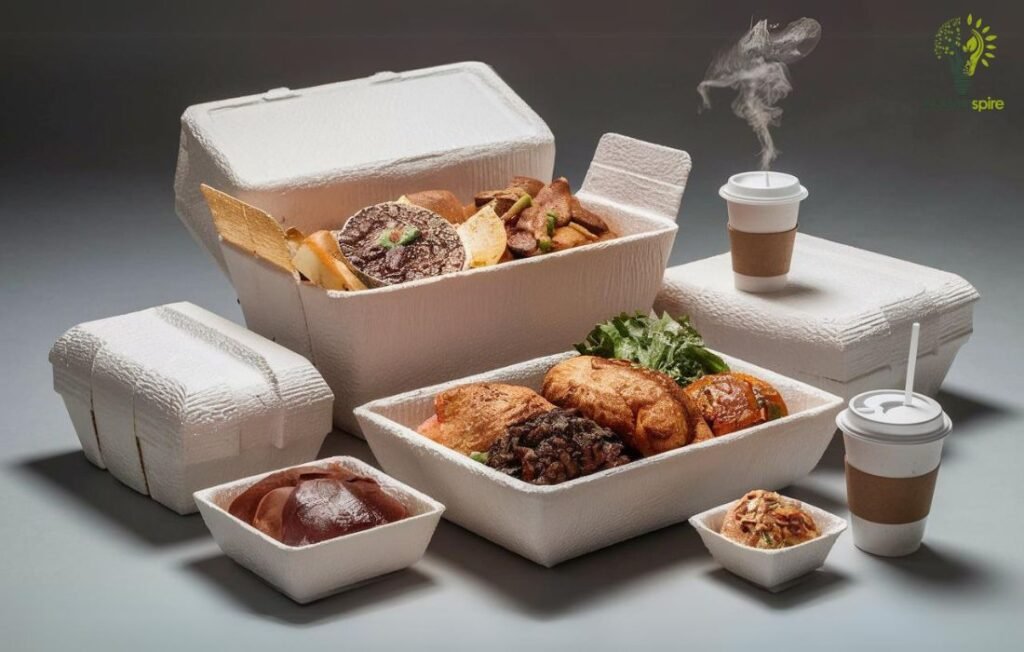
A History and Its Modern Applications:
EPS was invented back in 1940 by scientists at Dow Chemical. They discovered a way to infuse polystyrene beads with a gas, causing them to expand up to 50 times their original size. The result was a lightweight, shock-absorbing, and insulating material.
These days, EPS is everywhere! It’s used in building insulation, protective packaging, disposable cups and plates, and even crafts. You might be surprised at how versatile this material is. However, its very presence, from our morning coffee cups to product packaging, also presents a growing environmental concern.
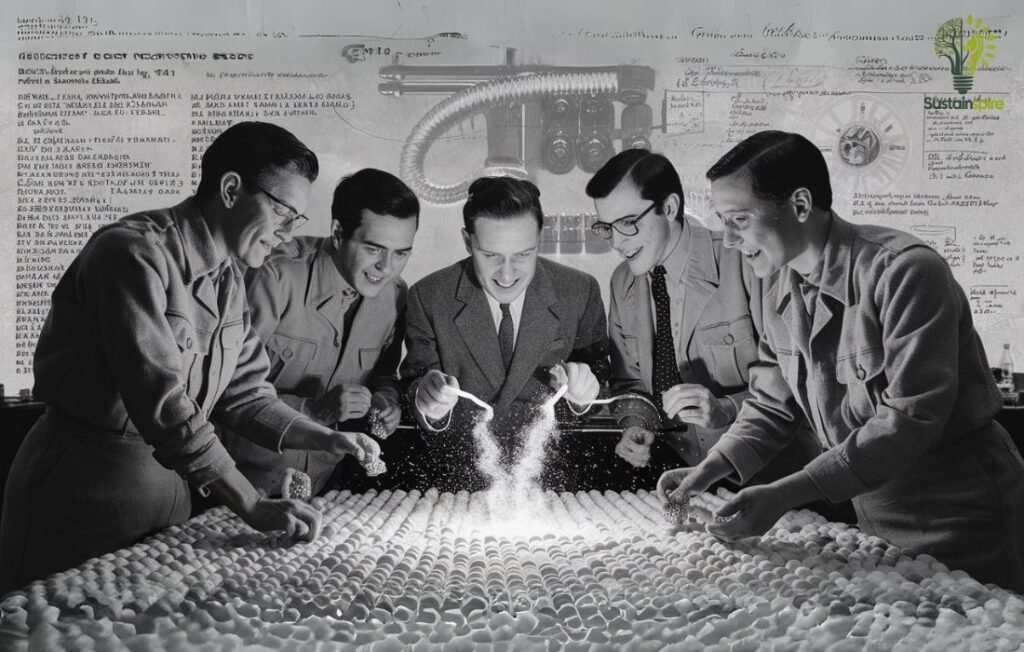
The Environmental Impact of Styrofoam: Can You Recycle Styrofoam?
Styrofoam doesn’t decompose easily. It can take hundreds of years for a single foam cup to break down in a landfill. This means all the Styrofoam ever produced is still out there, somewhere, in some form.
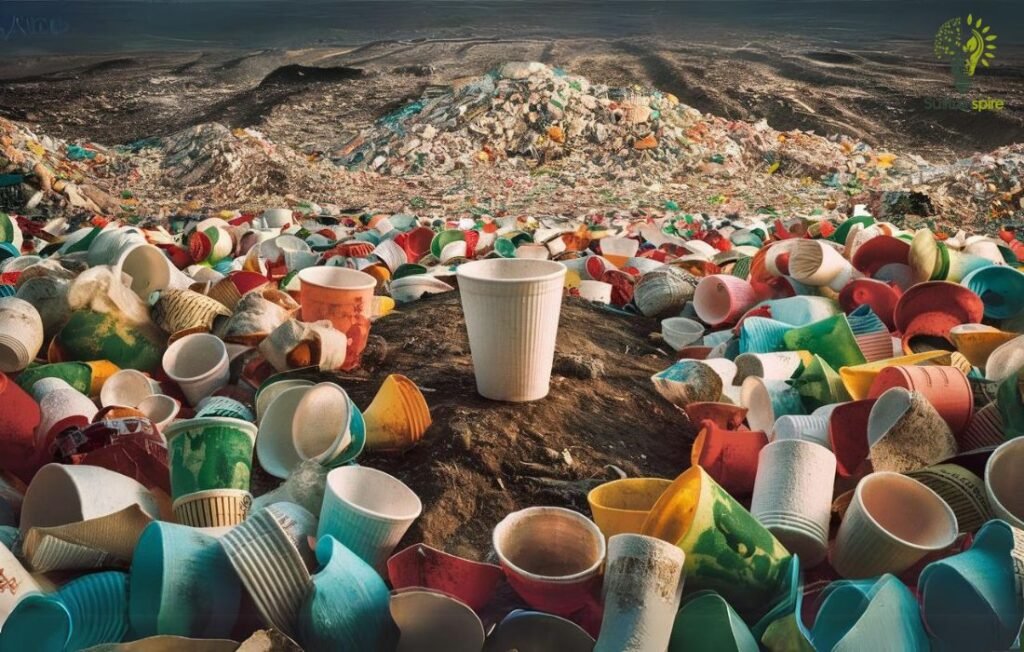
Not only does this contribute to overflowing landfills, but Styrofoam also breaks down into tiny particles called microplastics. These microplastics can end up in our oceans, harming marine life and potentially ending up in our food chain. Styrofoam poses a serious threat to wildlife. Animals often mistake small pieces for food, leading to ingestion and potentially fatal digestive problems. Birds and marine life are especially vulnerable to this danger.
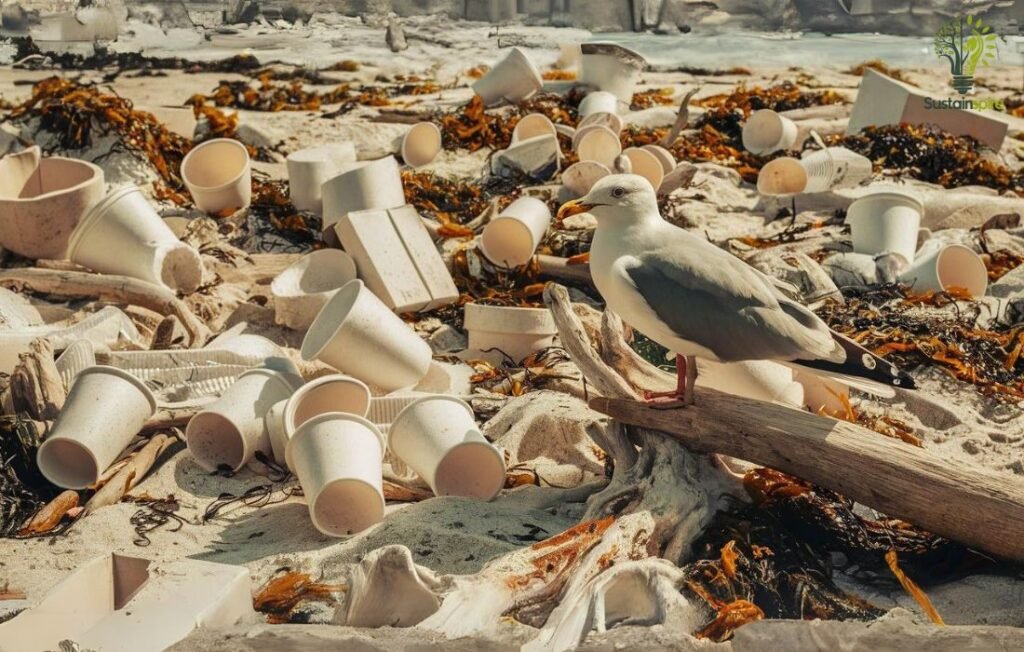
Furthermore, the production of Styrofoam releases harmful greenhouse gases into the atmosphere. These gases contribute to climate change, a pressing issue that affects us all. According to the United States Environment Protection Agency (EPA), the production of polystyrene (the plastic that makes Styrofoam) releases more than million tons of greenhouse gases annually.
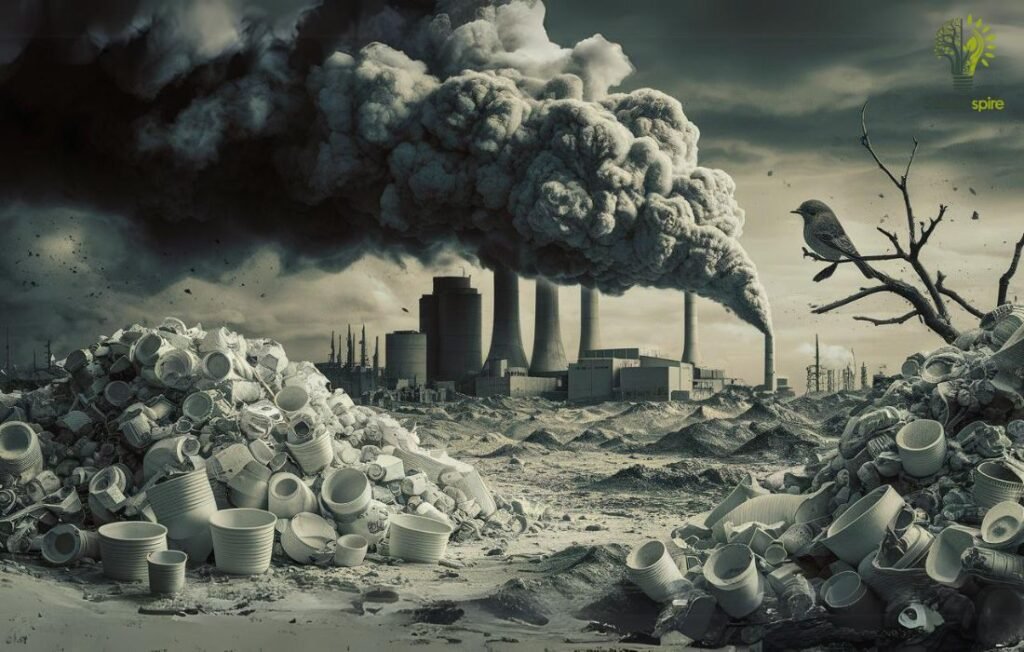
So Can You Recycle Styrofoam?
The Truth About Styrofoam Recycling is tricky. Many of us wonder if Styrofoam could be recycled. The answer, unfortunately, is not a simple “yes” or “no”. Technically, the answer to the question can you recycle Styrofoam is YES but with some conditions. It takes specialized equipment and processes to break it down and turn it into something new. So, while it’s technically recyclable, the access to those resources is limited.
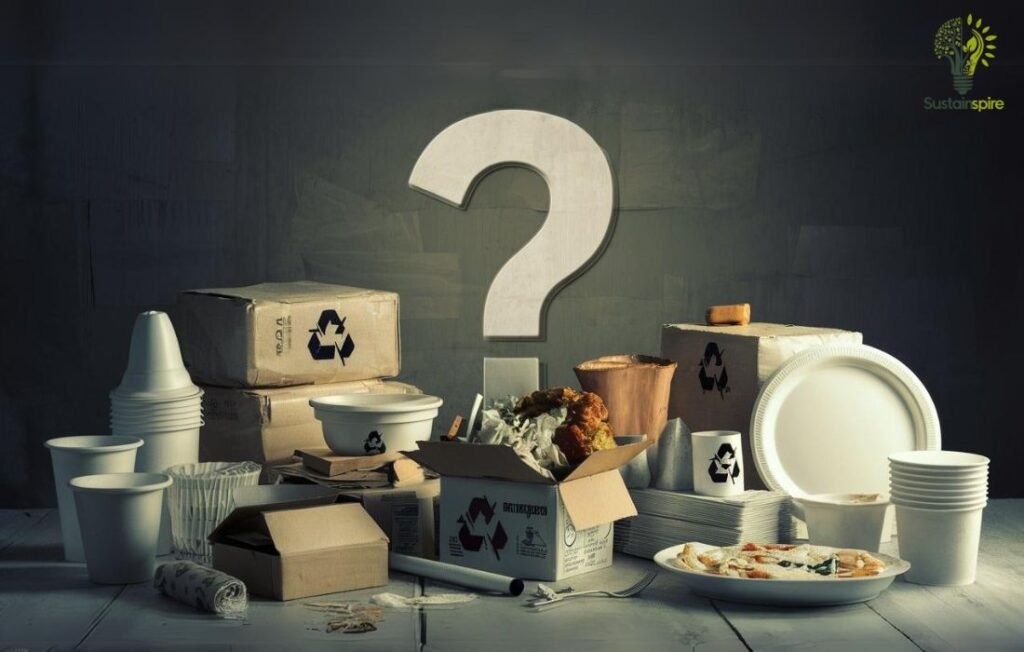
Curbside Recycling Programs:
Unfortunately, most curbside recycling programs don’t accept Styrofoam. This is because Styrofoam, also known as polystyrene #6, is difficult and expensive to recycle. It’s lightweight and bulky, taking up a lot of space in transport. Plus, the cleaning process required before recycling is quite complex.
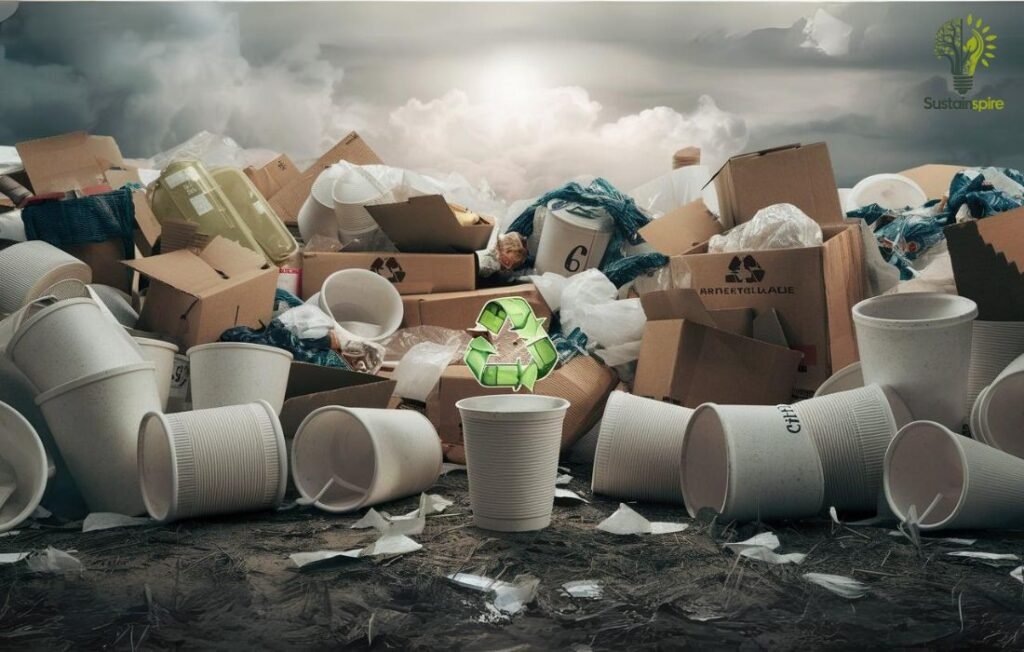
Special Styrofoam Recycling:
There are often special drop-off locations or programs specifically designed for Styrofoam recycling. Check with your local recycling center or waste management facility to see what options are available in your area. Some areas even have mail-back programs, making it easier than ever to recycle your Styrofoam properly.
Remember, just because Styrofoam isn’t always easy to recycle doesn’t mean we shouldn’t try! Let’s all do our part to keep this tricky material out of landfills.
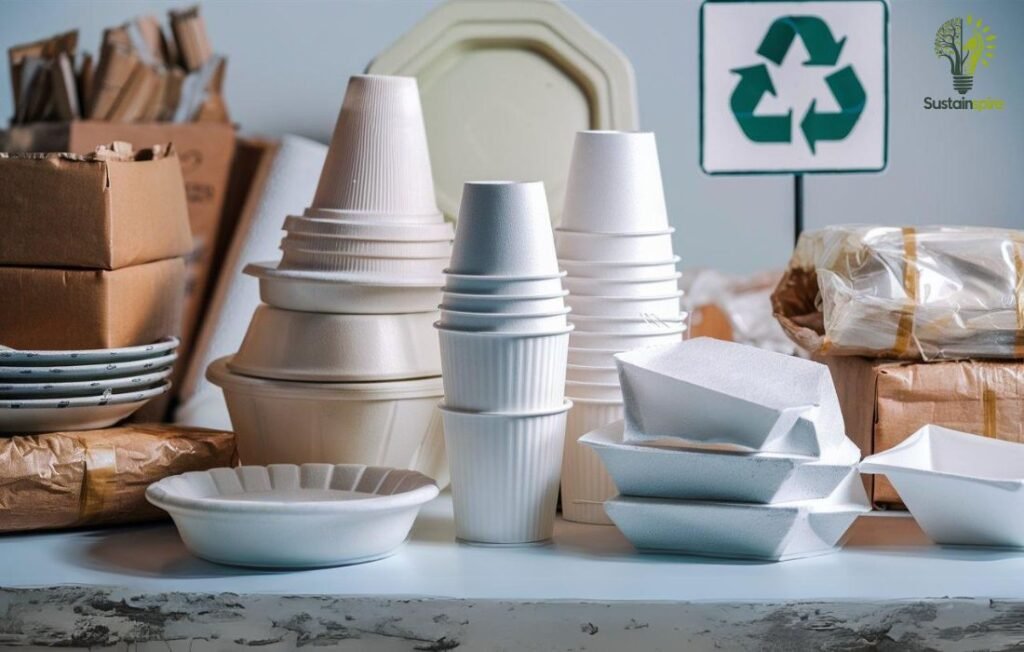
5 Easy Ways to Reduce Your Styrofoam Footprint
We all know that Styrofoam takes forever to break down in landfills. Luckily, there are simple things we can do every day to reduce our impact and keep this pesky material out of our environment. Ready to ditch the foam? Let’s get started!
1. Choose Reusable Options:
Instead of relying on single-use items, embrace reusable alternatives. Choose a travel mug for your coffee, bring your own containers for restaurant leftovers, and choose reusable shopping bags. These small exchanges can significantly decrease your Styrofoam waste over time. It’s like the old saying goes: “Reduce, Reuse, Recycle!” but in this case, let’s focus on the first two!
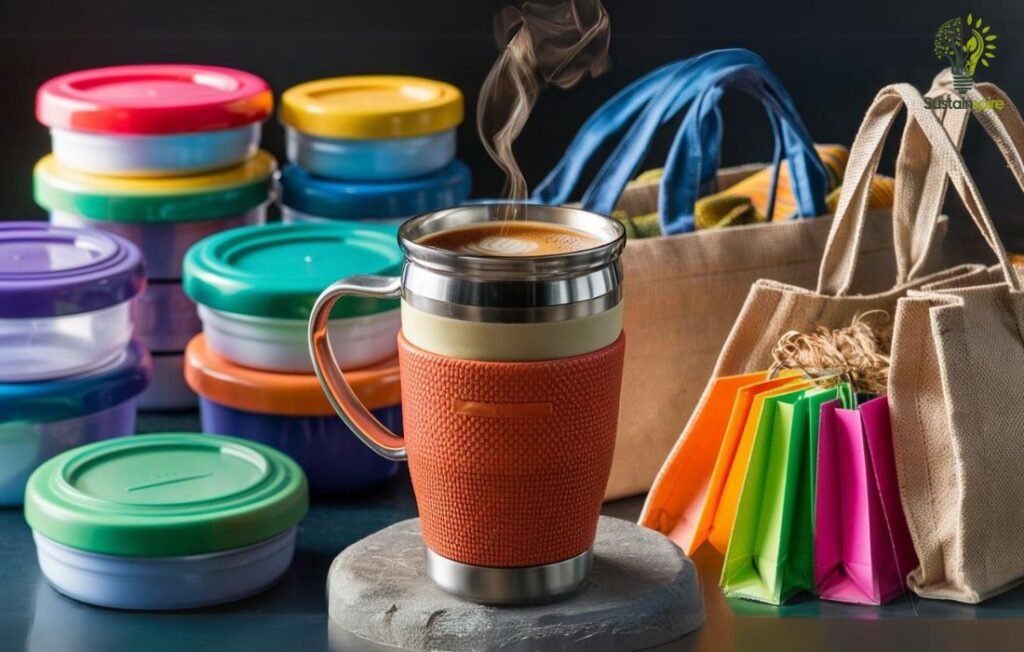
2. Look for Sustainable Alternatives:
From mushroom-based packaging to sugarcane plates, sustainable alternatives are popping up everywhere. When shopping, pay attention to packaging materials. Choose products in cardboard or other recyclable materials. For parties, consider durable, reusable plates and cutlery instead of their flimsy Styrofoam counterparts. Your guests probably won’t notice the difference, but the planet will thank you.
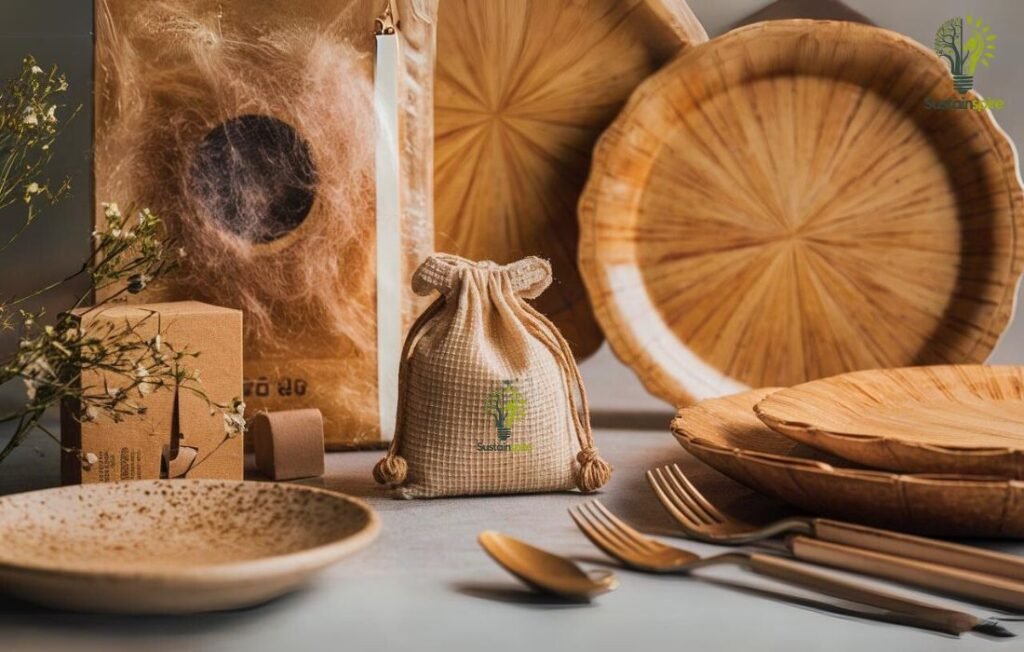
3. Support Businesses That Have Banished Styrofoam:
Many forward-thinking businesses are already phasing out Styrofoam. They recognize that it is simply not sustainable. The next time you’re grabbing a bite to eat or picking up groceries, show your support for establishments that prioritize eco-friendly packaging. You can even make it a point to compliment them on their efforts.

4. Compostable Takeout Containers:
Next time you order takeout, ask if they have compostable containers. These are made from plant-based materials like sugarcane or bamboo and can be composted in your backyard or through a composting program. Your food waste may turn into nutrient-rich soil instead of lingering in a landfill.
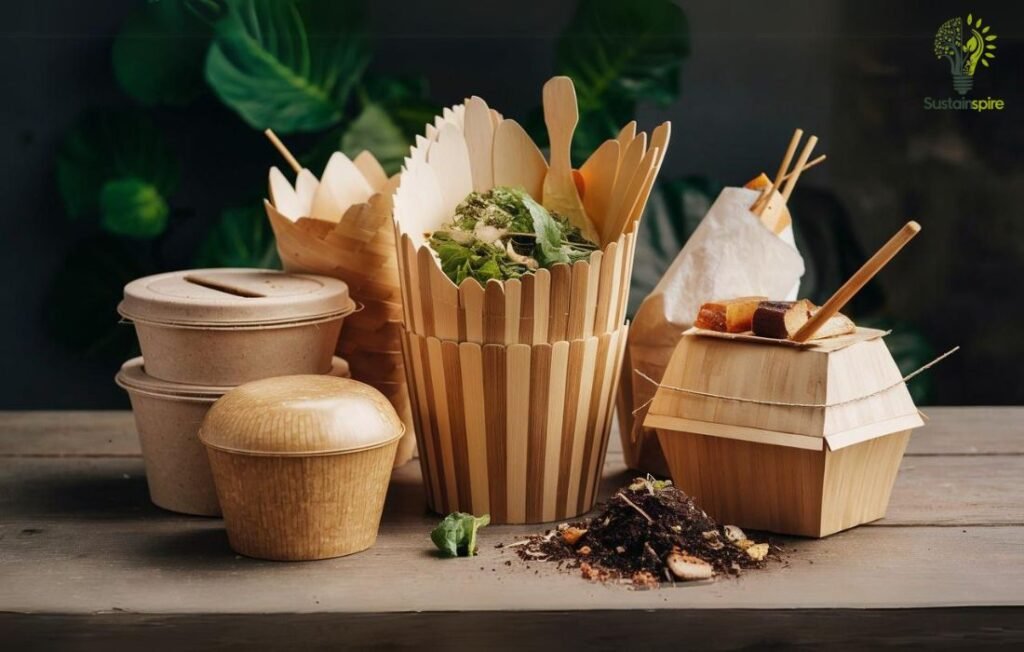
5. Educate Others About Styrofoam:
Share your knowledge with friends and family. Tell them about the dangers of Styrofoam and the great alternatives available. The more people who know about sustainable options, the faster we can reduce our reliance on this harmful material.

Beyond Recycling: Getting Creative with Styrofoam Reuse
While recycling Styrofoam is not always feasible, don’t despair! There are many ways to repurpose this material and keep it out of landfills. Let’s explore some creative and practical ideas for giving your Styrofoam a new life.
DIY Crafts and Projects:
Styrofoam’s lightweight and moldable nature makes it perfect for crafts. Can you recycle Styrofoam for creative projects? Kids will love creating animal figures, building blocks, or even miniature boats. Adults can use larger pieces to build decorative items for the home, like picture frames or whimsical sculptures. The possibilities are endless!
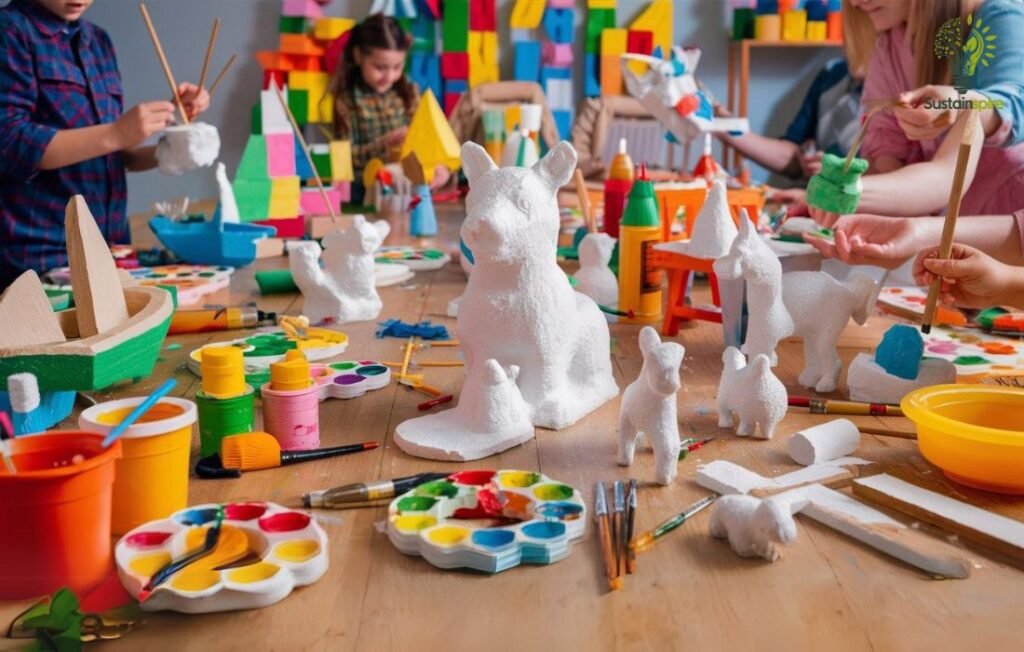
Gardening Hacks:
Believe it or not, Styrofoam can be a gardener’s best friend. Break down clean Styrofoam into small pieces to improve soil drainage. You can also use larger pieces to create lightweight planters, especially useful for balconies or areas with weight restrictions.

Packing Material:
This one’s a classic! Keep clean Styrofoam packing peanuts and use them to protect delicate items when moving or shipping. You can also use larger pieces to cushion fragile objects during storage. Always prioritize recycling Styrofoam when possible. However, these creative reuse ideas offer fun and practical ways to minimize waste and give this material a second life.
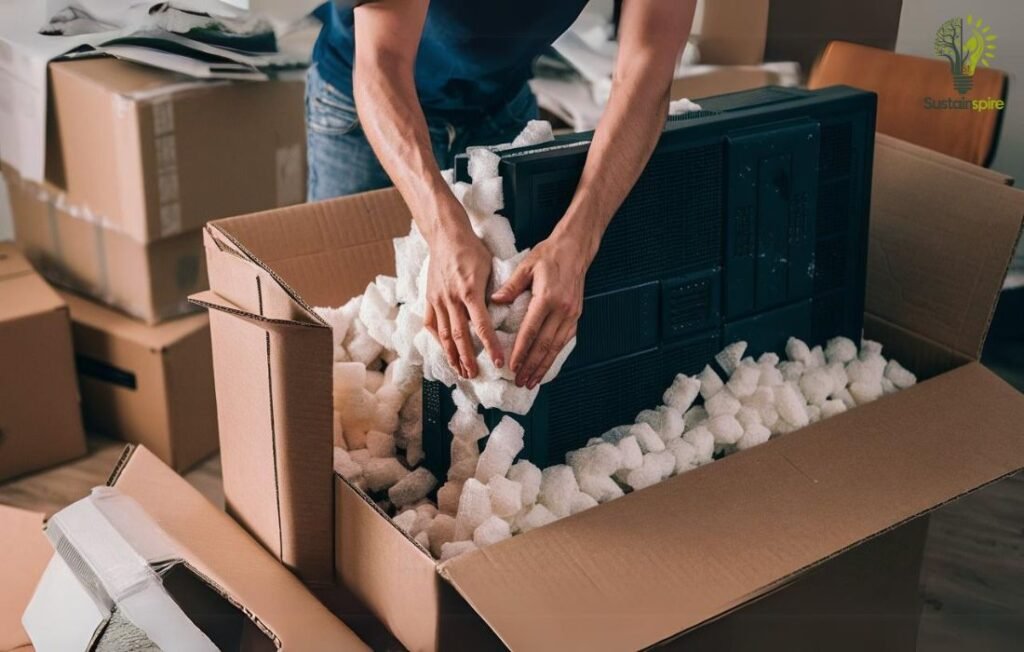
The Future of Styrofoam: Innovations and Alternatives
While recycling traditional Styrofoam remains a challenge, exciting developments offer hope for a more sustainable future. Scientists and engineers are actively exploring new materials and technologies to replace conventional Styrofoam. Let’s explore some promising developments:
Biodegradable and Compostable Options:
Imagine Styrofoam-like products that simply break down in your compost bin! Researchers are developing plant-based alternatives using materials like mushrooms and seaweed. These innovative materials offer similar insulation and cushioning properties but decompose naturally, reducing our reliance on petroleum-based Styrofoam.
Some companies are even using agricultural waste, like sugarcane, to create compostable packaging. This shift towards biodegradable and compostable options represents a major step towards reducing plastic waste. Can you recycle Styrofoam and shift to these eco-friendly alternatives?

Government Regulations and Industry Initiatives:
Governments around the world are starting to recognize the environmental impact of Styrofoam. Some regions have already implemented bans on single-use Styrofoam products, such as cups and containers. For example, cities like New York and San Francisco have banned single-use Styrofoam containers. This legislation encourages businesses to adopt eco-friendly alternatives.
In addition, many companies are taking the initiative to phase out Styrofoam packaging in favor of more sustainable options. These proactive steps demonstrate a growing commitment to environmental responsibility. These combined efforts give us hope for a greener future with less Styrofoam waste.

Conclusion:
This article has explored the multifaceted issue of Styrofoam, from its environmental impact to recycling difficulties and innovative reuse options. can you recycle Styrofoam? It is clear that Styrofoam poses a significant environmental threat. It takes hundreds of years to break down, wreaking havoc on our landfills and ecosystems.
While recycling Styrofoam is possible, it’s not as simple as tossing it in your curbside bin. Special facilities are often required, and these can be hard to find. However, the good news is that we can all play a part in reducing our Styrofoam footprint! Making conscious choices like using reusable containers, supporting businesses that have moved away from Styrofoam, and even exploring creative reuse options can make a difference.
Remember, every little step counts. Let’s work together towards a future where Styrofoam is a distant memory. What steps will you take today?
FAQs
While not all recycling programs accept them, some shipping companies will reuse packing peanuts.
Consider reusable options like ceramic or glass. If you need disposables, look for compostable options made from bamboo or paper.
No, it is not safe to microwave Styrofoam. Heating it can release harmful chemicals like styrene to leach into your food.
Sadly, Styrofoam can end up in landfills where it takes hundreds of years to break down, or even worse, it pollutes our oceans and harms wildlife.
Unfortunately, no. Styrofoam is not biodegradable, meaning it won't naturally decompose like organic materials.
Styrofoam takes up valuable space in landfills and can remain there for centuries, potentially leaching harmful chemicals.
Burning Styrofoam releases toxic fumes and is extremely dangerous. It is not recommended to burn it under any circumstances.



